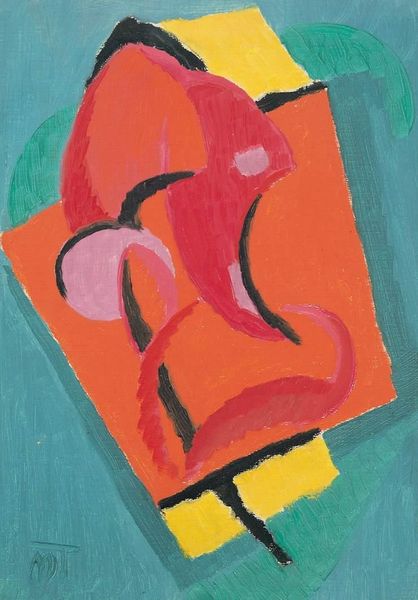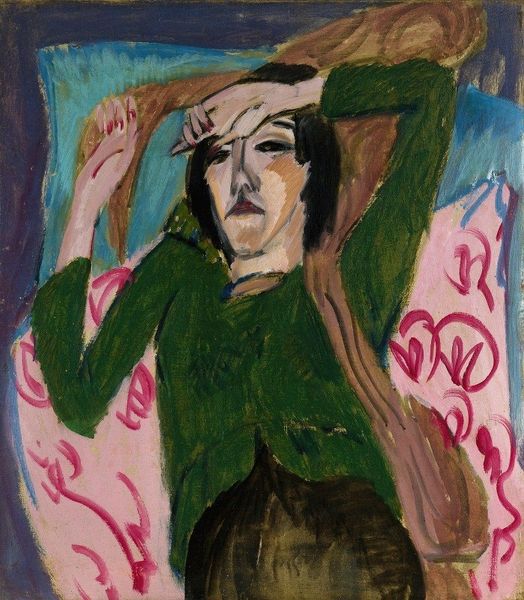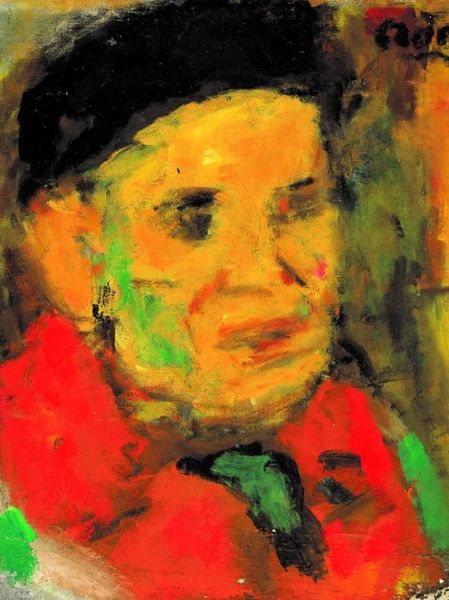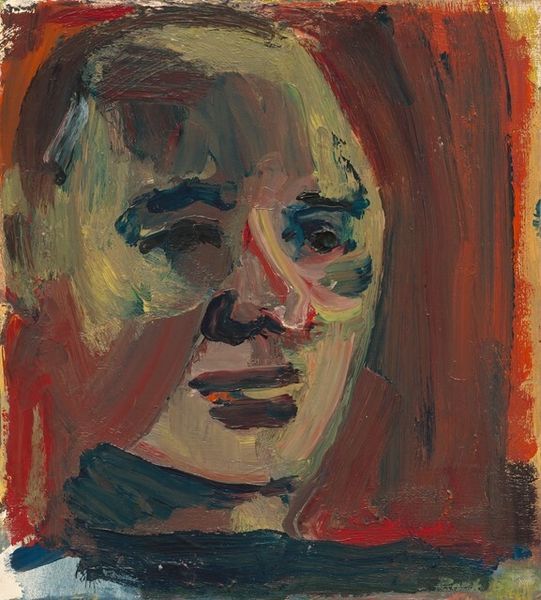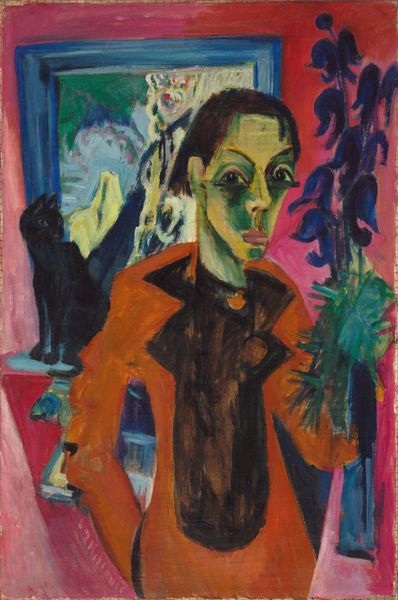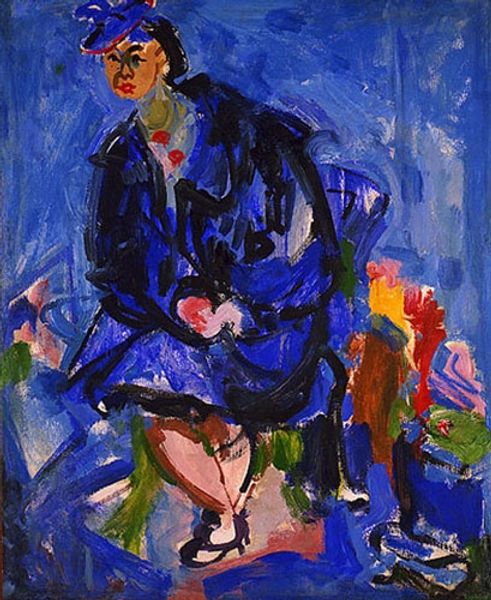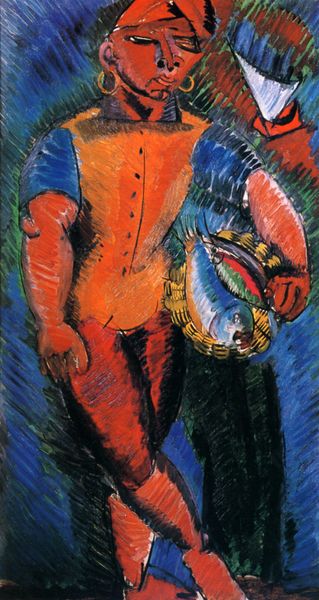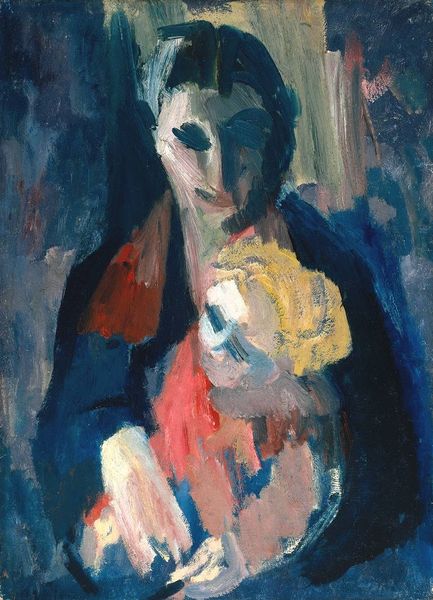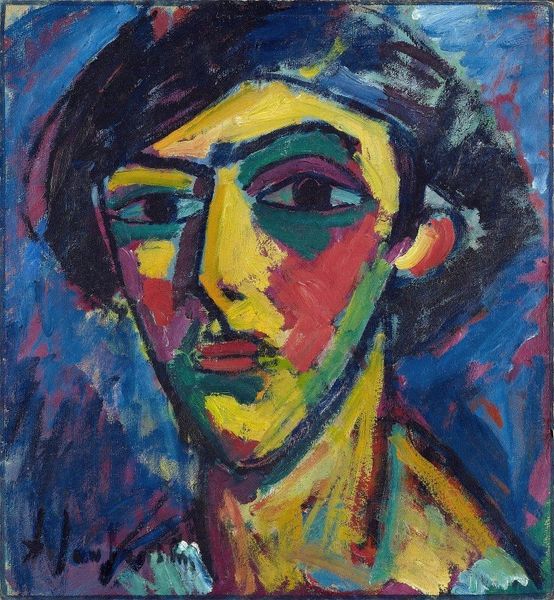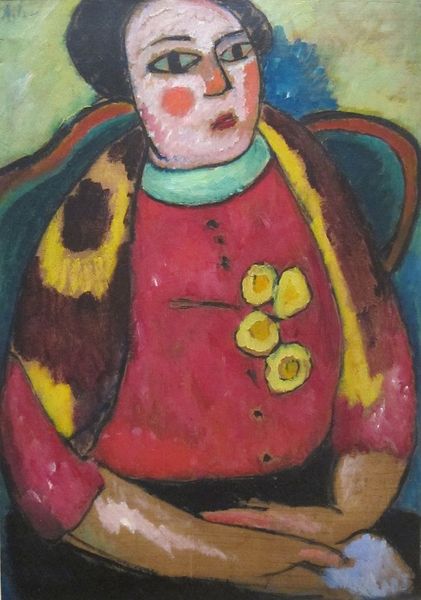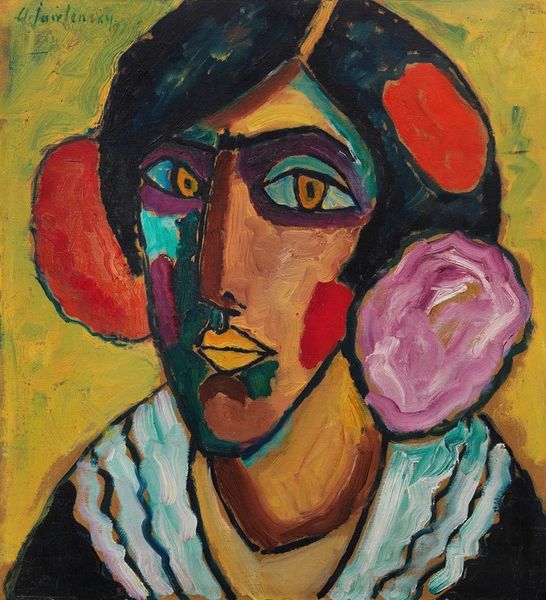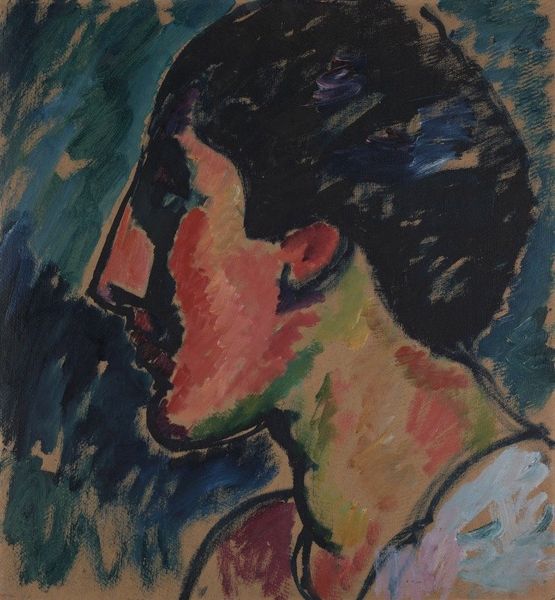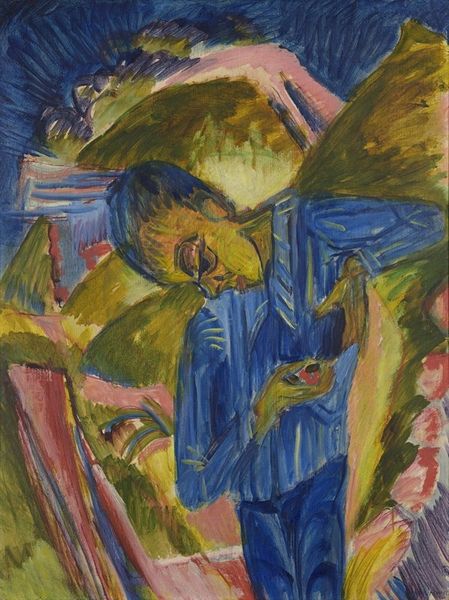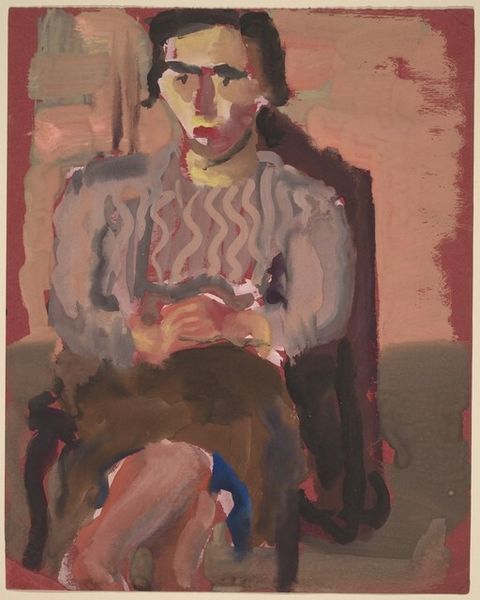
painting, oil-paint
#
portrait
#
figurative
#
painting
#
oil-paint
#
german-expressionism
#
figuration
#
neo expressionist
#
acrylic on canvas
#
expressionism
#
facial portrait
#
portrait art
#
expressionist
Copyright: Public Domain: Artvee
Curator: Immediately, I'm struck by the intensity of the colors, the jarring juxtaposition of pinks and greens. There's something unsettling yet captivating about this portrait. Editor: That's a sharp take. We are looking at Alexej von Jawlensky's 1909 painting, “Spanier," rendered with oil paint. He was a key figure in German Expressionism, and the title "Spanier" translates to "Spaniard," suggesting a cultural context that's worth investigating. Curator: Cultural context, definitely. Given its bold colors and flattened perspective, how might this portrait fit within the broader societal narratives around representation and cultural appropriation of the early 20th century? Was this Jawlensky's attempt to capture an "exotic" other? Editor: It’s likely more complex than a simple appropriation. During this period, many artists were grappling with anxieties about modernity and the loss of tradition. Artists looked beyond Europe to supposedly “primitive” cultures, seeking authenticity and spirituality that they felt was missing from the West. It can be viewed critically for sure. Curator: The raw application of paint and almost mask-like simplification of the subject's features… what effect do you think those choices achieve? I am curious to understand the Expressionist perspective. Editor: Jawlensky deliberately used abstraction and distortion to convey inner emotions. This approach reflects the broader Expressionist movement's rejection of naturalism in favor of expressing subjective experience. The brushstrokes create a feeling of urgency, almost as if the artist is wrestling with their own feelings in paint. It is meant to reach into the viewer's core. Curator: How were paintings such as "Spanier" displayed and consumed within the gallery system? The early 20th century witnessed an expansion of the art market that introduced a larger public to more modern aesthetics, including that of Jawlensky. What role did the institutions play? Editor: Yes, Expressionism, including Jawlensky's work, found its niche within galleries and exhibitions that sought to challenge academic norms. The reception was, understandably, mixed; his paintings would’ve been perceived as challenging, or even offensive to traditional artistic standards, making their accessibility as challenging. Curator: It’s easy to lose sight of how such artworks can act as visual provocations, and also as opportunities to question how artists were negotiating new cultural values through aesthetics. It makes you rethink where you stand when it comes to understanding his works. Editor: Absolutely. Considering Jawlensky's "Spanier" invites us to interrogate his approach. Art really holds up a mirror to us all.
Comments
No comments
Be the first to comment and join the conversation on the ultimate creative platform.
